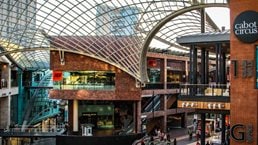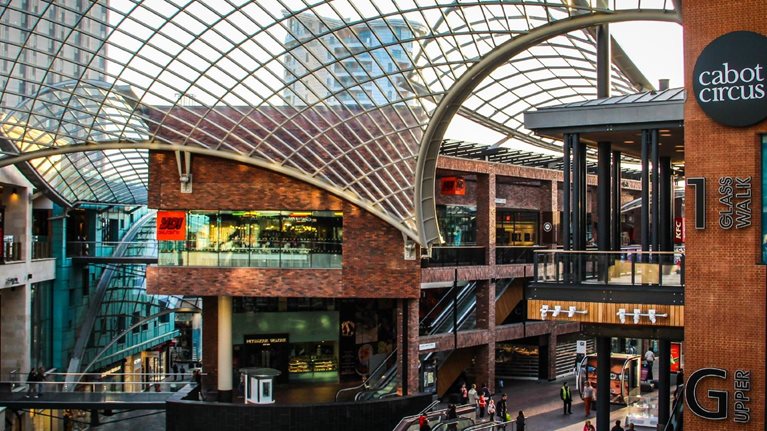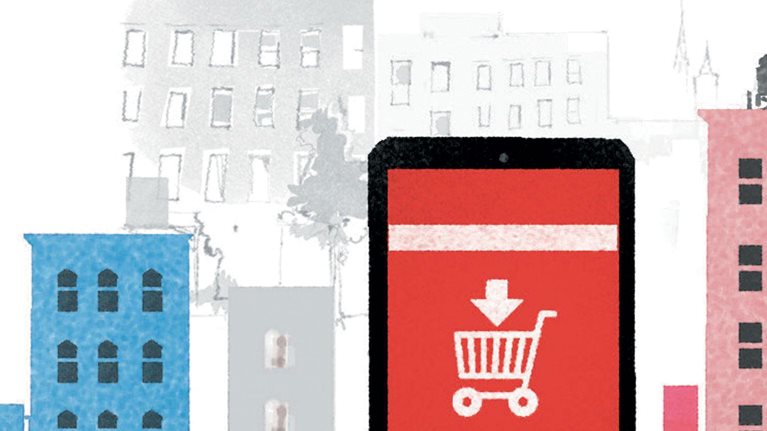Digital technology is transforming global lifestyles and changing the way we live, work, shop, eat, play, and learn. Real-estate developers therefore must provide new ways to meet these needs.
One example is the shopping mall. These sit at the heart of communities in many cities in both the developed and developing worlds. But as consumers embrace digital technologies, developers must redefine the traditional shopping mall to adapt to this behavior.
In this article, we explore five consumer trends that will shape the future of the shopping mall.
Entertainment
Many millennials—adults born from the early 1980s on—prioritize spending on multisensory experiences and events over product ownership. They prefer instant gratification from entertainment and are attracted to media, gaming, and experiences that are shared socially. Half of millennials regularly go online for video games (versus 30 percent for Generation X); four in ten use social media to record their experience after using a product. Meanwhile, Gen X consumers—those born from the mid-1960s to early 1980s—are embracing digital from a different angle. For example, this segment increasingly views digital entertainment as an education tool, underpinned by smart technology and an expanding, globally connected Internet.
Stay current on your favorite topics
Meeting the needs of these groups while responding to rapidly developing technologies, such as virtual reality and participative experiences, will be the key to providing successful entertainment.
This disruption in traditional entertainment offerings has serious implications for the real-estate industry. Here are some ways that they may react:
-
Reimagining public spaces as a canvas for entertainment. This can mean integrating the community experience into the public realm via live social-media feeds and new display formats that share user-generated content. Technology will enable public events and spectacles to become participatory experiences with multisensory appeal, increasing visitor numbers and tying the physical space with the virtual world. Being part of such experiences and sharing them becomes a social currency for millennials, thus encouraging repeat visits.
-
Working with educators to create new learning opportunities via “edutainment.” Likely venues include museums and theaters, which could be redesigned to combine learning, discovery, and entertainment. Some destination malls are already considering designing entire districts as “hackable and playable.”
-
Redesigning entertainment hubs, such as movie theaters, theme parks, and gaming parlors as interactive experiences with virtual-reality content and immersive experiences where the customer becomes part of the story.
Food and drink
“Food is the new fashion” is the mantra that increasingly guides development. The expression reflects the idea that food has usurped fashion as a force in retail and travel. One example is the fast-growing trend toward healthy eating, driven by millennials’ preferences and government policies to curb obesity. Food-focused digital platforms that see consumers routinely reading online reviews before choosing restaurants or ordering through food-delivery platforms are on the rise.
Would you like to learn more about our Capital Projects & Infrastructure Practice?
Quick-service restaurants are upscaling through furniture and technology changes. At the same time, casual-dining restaurants are transitioning to two established formats—fast casual and casual premium. On the other hand, fine dining is embracing new and niche concepts, such as multisensory experiences. The sector is also adapting itself to provide more accessible dining formats.
In response, real-estate developers are positioning more restaurants within retail areas; the idea is to create gastronomic “stop spots” to attract shoppers. Real-estate experts suggest that the gross leasable area devoted to food and beverage outlets in malls could rise to some 25 percent by 2020 from 10 percent today. Among the possible strategies are the following:
-
Using technology, such as self-ordering, and providing healthier eating options to redefine traditional fast-food outlets and casual dining.
-
Creating new “experiential dining” options that offer more entertainment for consumers. Examples include farm-to-table courtyards, gourmet food halls, and “cook your own food” facilities.
-
Seeing food as theater, using reconfigurable spaces and rotational chef concepts in restaurants to offer customer encounters with, for example, celebrity chefs.
Retail
Millennial consumers want to shop for experiences as well as products. Rising demand for cooking classes, health-and-wellness sessions, and makeup tutorials means that retailers, athletic-apparel makers, and electronics companies are changing what they offer and how. Specifically, traditional department stores and shopping malls are wondering whether and how to embrace online shopping.
The traditional department-store format is driving less traffic to shopping malls as consumers move their retail activity online. With online retail creating choice overload, consumers are beginning to appreciate curated retail concepts. “Pop up” stores that provide distinctive products for a short period are one significant response. These are on the rise in a variety of markets. In the United Kingdom, for example, pop-ups accounted for £2.3 billion in sales in 2015, up 12 percent compared with the previous year.
To meet this changing environment, real-estate developers should consider the following:
-
Creating retail centers, that are also learning zones to bring together consumers, retailers, and entertainment. One example is a sporting-goods store that includes a fitness studio to enable the consumer to experience the product.
-
Experimenting with niche retail concepts such as revolving storefronts, pop-up stores, dedicated space for “glocal” brands, and offline showrooms of online players. Doing so creates a more interesting mix of tenants. It may not maximize leasing yields per square foot, but it will generate buzz and traffic.
-
Converting anchor retail spaces into coworking areas that are flexible and reconfigurable for other retailers and more appealing to start-ups and to millennial customers. For example, one San Francisco mall created a coworking space that provided direct access to more than 20 million mall shoppers.
-
Allocating reconfigurable spaces in mall corridors and piazzas to host pop-up stores for product launches and seasonal offerings.

The future of the shopping mall
Transportation
Getting into and out of the mall is an important part of the shopping experience—and often a frustrating one, when it comes to parking, safety, and convenience. Here are some approaches that real-estate developers might consider to improve this part of the experience:
-
Technology-enabled parking, including use of robot parking valets to perform the last-mile parking service and maximize the available parking space. Integrating parking apps and sensors can help shoppers spot spaces and then get to them.
-
Redesigning car parking to include dedicated e-hailing pick up zones, shared economy parking, and fast-charging stations for electric vehicles.
-
Preparing underground parking space for possible future conversion to retail or commercial space as autonomous vehicles gradually reduce the need for private-car parking.
Technology
By 2017, the millennial generation will comprise the largest online audience, and they will have more buying power than any generation ever. Almost seven in ten say they are influenced by friends’ social-media posts; 83 percent say they trust recommendations by friends and family. They rely on peer recommendations, and increasingly discover products online before going out to shop. But they still want to touch, feel, and explore products before purchasing them. The need, then, is to create a seamless chain between online and on-site shopping. There are several technology-enabled innovations to consider:
-
Creating “virtu-real” formats to provide consumers with a more interactive retail experience, for example, through the use of touchscreen navigation panels, virtual fitting rooms, magic mirrors, and augmented-reality zones.
-
Merging online and offline retail using “social shopping” technology with digital screens in transport-arrival zones, piazzas, shop windows, and major junctions of the shopping district. These can help consumers find products, access reviews, and then direct them where to buy.
-
Using smartphones for e-checkouts and click-and-collect services, to help blend the offline and online shopping experience. Some of the largest mall operators in the United States are already working with partners to give shoppers same-day delivery service.
Digital technologies and changing shopping habits are a clear threat to traditional retail business models. But there are positive ways to respond to these trends. To embrace these opportunities, real-estate developers must get closer to consumers and figure out how to meet their evolving wants and needs. That means rethinking the role of the shopping mall, and adapting its strengths to those of the virtual world.


